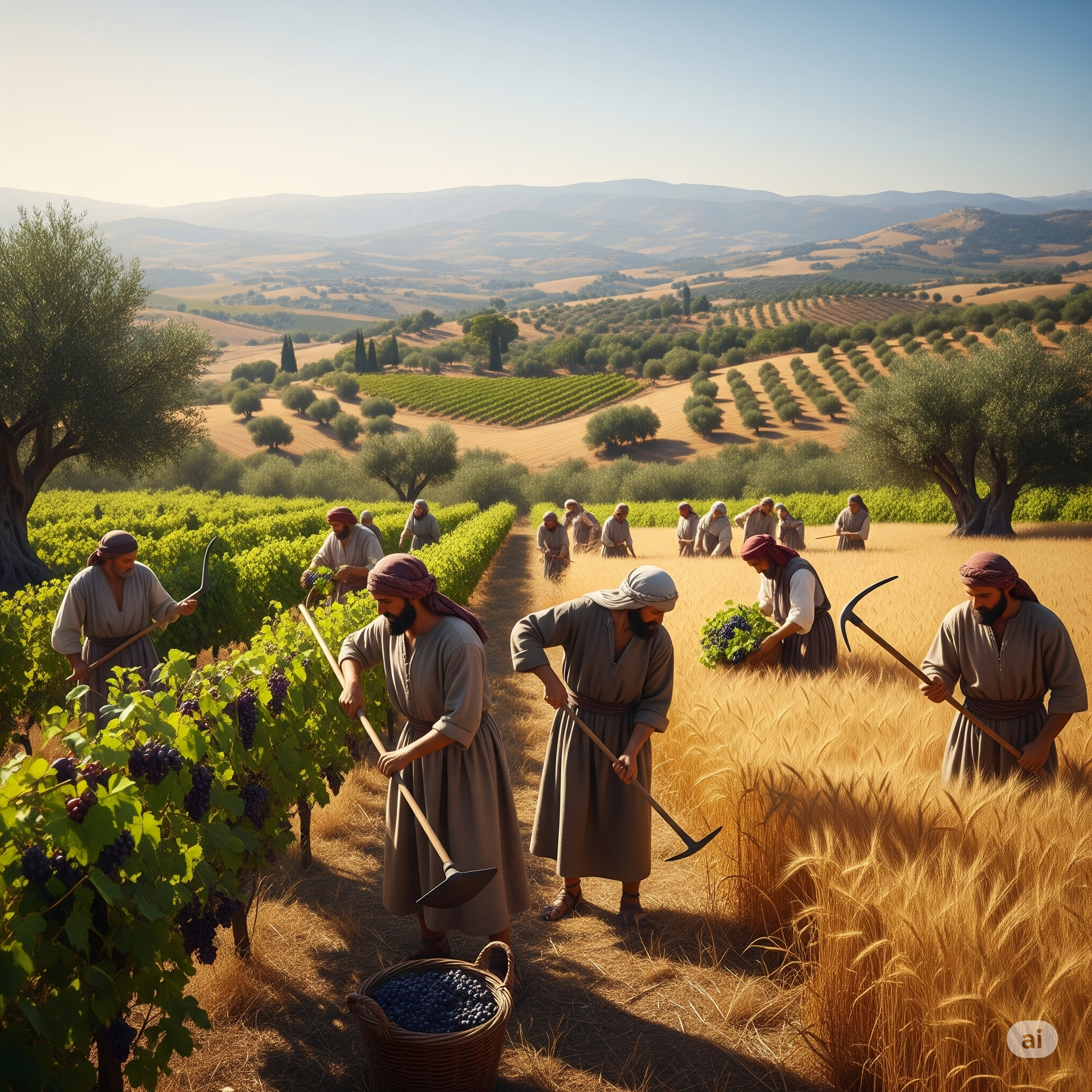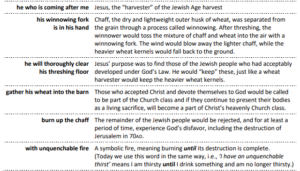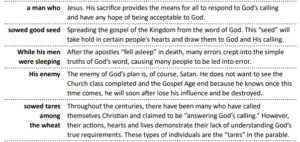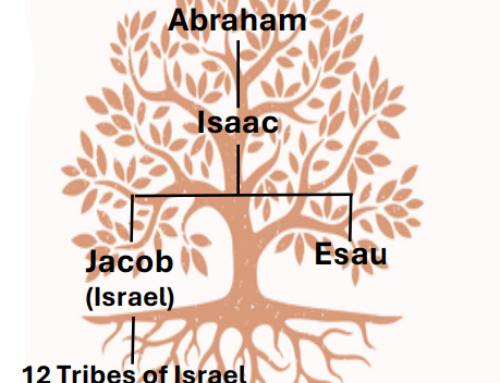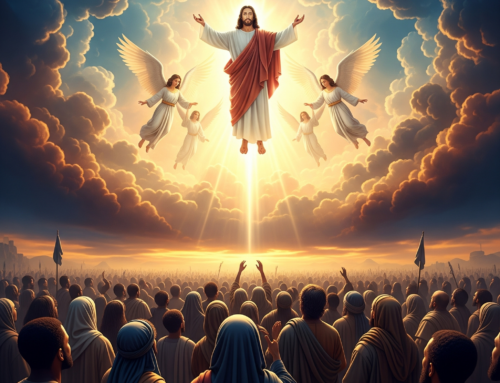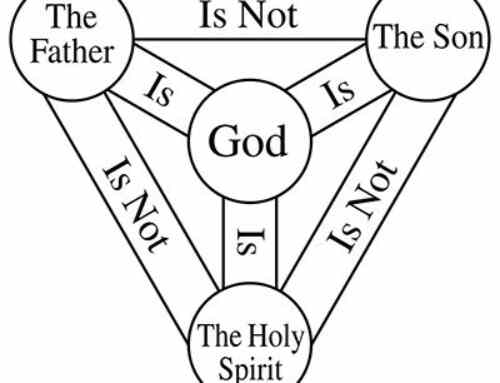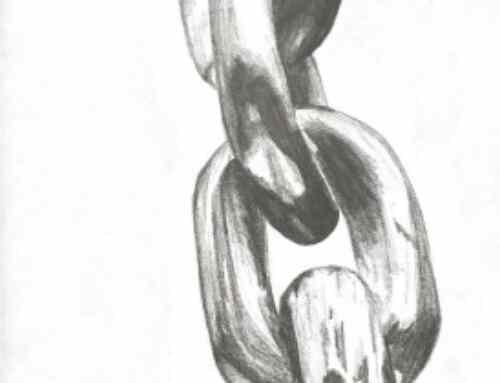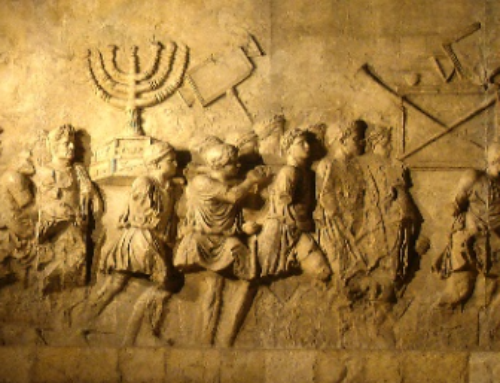The Harvests of the Bible
Goal of this Study: Examine three ages of God’s plan for mankind and the transitional times between them.
WHY are some of these transitional periods referred to as “harvests?” WHO does each age, and each transitional period between the ages, focus on? WHAT is the goal of each age and each harvest?
WHERE does the Bible discuss the ages and the harvests? WHEN do each of the ages and harvests occur?
Additional references: Studies in the Scriptures Vol. 3 Chap. 5 & 6
Why is it important to understand the meaning of Bible symbols and how to recognize them?
The Bible is a mixture of symbols and facts. Having biblical messages revealed through symbolic language is just one way the Bible’s mysteries can be uncovered. Through the use of symbols, concepts can be conveyed that are too vast or too far in the future to adequately express in exact words at the time the words were written.
God also uses symbols as a mechanism to reveal key features of His plan at the appropriate times.
- Jesus talks about this concept in Matthew 24:45. The “servant who delivers meat in due season” indicates that certain truths would only be due to be understood and explained at certain times.
- Symbols are a mechanism through which God enables those who are following Jesus to “walk by faith, not by sight.” 2 Corinthians 5:7
If the Bible provided precise dates and explanations, there would be no need for faith. Everyone could pick up the Bible and understand God’s purposes and plans.
- Matthew 13:11 “Jesus answered them, ‘To you it has been granted to know the mysteries of the kingdom of heaven, but to them it has not been granted.’” At a future time, everyone will understand, as promised. See Zephaniah 3:9, Habakkuk 2:14, 1 Timothy 2:4.
Examples of biblical symbolism
- Micah 4:1–2 “And it will come about in the last days that the mountain of the house of the LORD will be established as the chief of the mountains. It will be raised above the hills, and the peoples will stream to it. Many nations will come and say, ‘Come and let us go up to the mountain of the LORD and to the house of the God of Jacob, that He may teach us about His ways and that we may walk in His paths. For from Zion will go forth the law, even the word of the LORD from Jerusalem.’”
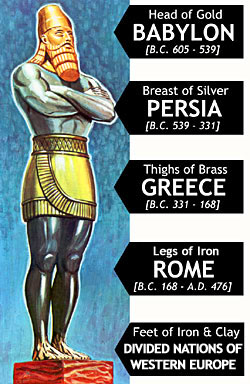 Mountains are large, controlling natural structures that impose their presence on man. They dictate how we live. This symbol gives us a sense of governments that impose upon us and dictate how people will live. Scripturally, “mountains” are used to represent both the government of God and the governments of mankind.
Mountains are large, controlling natural structures that impose their presence on man. They dictate how we live. This symbol gives us a sense of governments that impose upon us and dictate how people will live. Scripturally, “mountains” are used to represent both the government of God and the governments of mankind.
- Daniel 2 – Symbols used in Nebuchadnezzar’s dream of a Statue
We are told about Nebuchadnezzar’s dream of a statue where each part of the construction was symbolic of a particular government empire. Any symbolic interpretation should be in harmony with the overall scriptural message. Misinterpreting a symbol, or interpreting a symbol as literal, can lead to a misunderstanding of God’s plan. One of the best methods of identifying symbols and their potential interpretations is attending studies, discourses and interacting with others of like precious faith, especially elders.
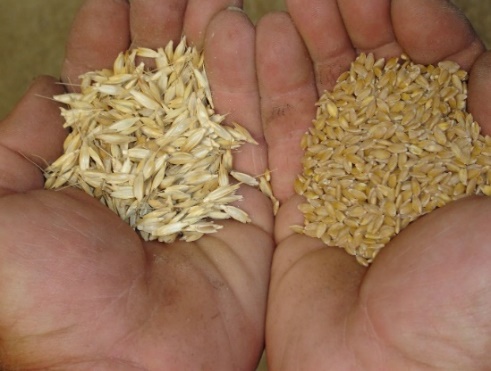
What is a literal harvest? What are the outcomes of a harvest?
In agriculture, a crop is planted, cared for and allowed to grow. When the crop has matured, the products of the crop are harvested.
- The good, valuable parts of the crop are separated from the waste or otherwise not valuable products of the crop.
- The valuable products are collected and cared for, while the waste is discarded and sometimes destroyed.
The pealed wheat is on the right, while the husks, or chaff, is on the left Wheat was a common crop planted and harvested in biblical times, as it Is today.
 Like a lot of fruits, wheat must be ‘peeled’ to reach the valuable kernel, from which products can be made.
Like a lot of fruits, wheat must be ‘peeled’ to reach the valuable kernel, from which products can be made.- The thin skin that needs to be peeled away is called “chaff.” Chaff is often used as a term for something worthless that is separated from something valuable.
- Weeds are a common problem with any agricultural effort. A “tare” was a particular nuisance to wheat farmers. Because tares and wheat look so similar when they are young, farmers let wheat and tares grow until they were mature enough to tell apart.
What events mark the start and end of the JEWISH AGE in God’s plan?
What was the main purpose of the Jewish Age?
At the time of the death of Jacob, all of his family (his descendants) were living in Egypt. God renamed Jacob as “Israel.” During this time in Egypt, Israel’s descendants had grown to be a significant number of people:
- Genesis 35:10 “God said to him ‘Your name is Jacob; you shall no longer be called Jacob. But Israel shall be your name. Thus He called him Israel.’”
- Exodus 1:7 “But the sons of Israel were fruitful and increased greatly and multiplied and became exceedingly mighty so that the land was filled with them.”
At God’s command, Moses led this group of people out of Egypt, bound for the land God had promised to Israel’s grandfather, Abraham Genesis 12:5–10.
God asked Israel’s descendants to become His people and to accept His law and ways.
The people chose to accept these laws. By worshipping God and keeping His laws, these people began to be known as the Jewish people. During this period of time, God chose to deal with only the Jewish people, who eventually became the nation of Israel.
- Exodus 19:8 “All the people answered together and said, ‘All that the LORD has spoken we will do!’ And Moses brought back the words of the people to the LORD.”
- Amos 3:2 “You only have I chosen among all the families of the earth…”
Because of this, this period of time or age is referred to as “The Jewish Age.” Through the keeping of God’s Law, the Jewish people were expected over the generations to develop hearts and minds that were pleasing to God.
During this period, God began to deliver prophecies of a Messiah.
The word “Messiah” is found in the Old Testament only twice in Daniel 9:25, 26 (KJV) The same Hebrew word is more often translated into English as “anointed.”
- Isaiah 7:14 “Therefore the Lord Himself will give you a sign: Behold a virgin will be with child and bear a son and she will call his name Immanuel.”
- Micah 5:2 “But as for you, Bethlehem Ephrathah, too little to be among the clans of Judah, from you one will go forth for Me to be ruler in Israel. His goings forth are from long ago, from the days of eternity.”
What was the Jewish Age “HARVEST” period and what was its goal? Why was this harvest period important to the age that followed it?
The time for development was over. Jesus as King had arrived to judge the results. Jesus was the Jewish people’s long-foretold king. He assumed this role by fulfilling prophecy when he rode into Jerusalem.
Original Prophecy:
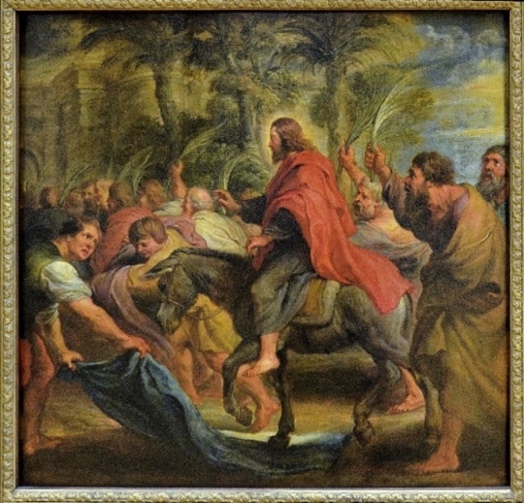 Zechariah 9:9 “Rejoice greatly O daughter of Zion! Shout in triumph O daughter of Jerusalem! Behold your king is coming to you; He is just and endowed with salvation, humble, and mounted on a donkey, even on a colt the foal of a donkey.”
Zechariah 9:9 “Rejoice greatly O daughter of Zion! Shout in triumph O daughter of Jerusalem! Behold your king is coming to you; He is just and endowed with salvation, humble, and mounted on a donkey, even on a colt the foal of a donkey.”
The Fulfillment:
- Matthew 21:5–9 (KJV) “Tell ye the daughter of Sion, ‘Behold, thy King cometh unto thee, meek, and sitting upon an ass, and a colt the foal of an ass.’ And the disciples went, and did as Jesus commanded them, and brought the ass, and the colt, and put on them their clothes, and they set him thereon… And the multitudes that went before, and that followed, cried, saying, ‘Hosanna to the son of David: Blessed is he that cometh in the name of the Lord; Hosanna in the highest.’”
L’Entrée du Christ à Jérusalem by Pierre-Paul Rubens
Just as God’s Law had only been to the Jewish people, Jesus made it clear he was only sent to judge and gather (“harvest”) the Jewish people at that time.
- Matthew 15:24 “But he answered and said, ‘I was sent only to the lost sheep of the house of Israel.’”
Jesus searched for those Jewish people who, after living under God’s Law, were ready to make a complete consecration to God.
This is exemplified in Jesus’ interaction with the rich young ruler in Matthew 19:16–23. Although the rich young ruler had, by his words, obeyed the Mosaic Law, he still approached Jesus and asked what more he must do. Jesus indicated a full consecration to God was necessary.
- Matthew 19:21 “Jesus said to him, ‘If you wish to be complete, go and sell your possessions and give to the poor and you will have treasure in heaven; and come follow me.’”
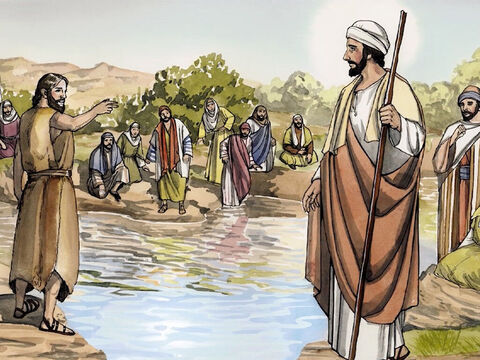 Thus, the purpose of the Jewish Age harvest period when Jesus was on the earth was to gather those of the Jewish people who had developed a proper heart and mind for inclusion in the “little flock,” the faithful followers of Jesus.
Thus, the purpose of the Jewish Age harvest period when Jesus was on the earth was to gather those of the Jewish people who had developed a proper heart and mind for inclusion in the “little flock,” the faithful followers of Jesus.
Jesus’ selection process, or “harvesting” of the Jewish people was symbolically referred to by John the Baptist. John the Baptist’s purpose was to proclaim the Messiah and prepare people to receive Jesus into their hearts.
There were 400 years between the last words of the Old Testament in the book of Malachi and when the New Testament begins. No prophets were sent to Israel during this time and Greek influence began to corrupt Judaism. John had a lot of work to do in order to get the people ready to receive their Messiah!
John the Baptist’s words concisely summarize the important points of the Jewish Age harvest:
- Matthew 3:11–12 “As for me, I baptize you with water for repentance, but he who is coming after me is mightier than I, and I am not fit to remove his sandals; he will baptize you with the Holy Spirit and fire. His winnowing fork is in his hand and he will thoroughly clear his threshing floor; and he will gather his wheat into the barn but he will burn up the chaff with unquenchable fire.”
The Jewish Age harvest ended without a sufficient number of the Jewish people being found worthy. Because of this, God’s calling would extend to the rest of mankind, the Gentiles, and exclusive favor to the Jewish people would end.
 What events mark the start and end of the GOSPEL AGE in God’s plan?
What events mark the start and end of the GOSPEL AGE in God’s plan?
What is the main purpose of the Gospel Age?
God sent the Apostle Peter a vision.
- Acts 10:15 “Again a voice came to him a second time, ‘What God has cleansed no longer consider unholy.’”
God was informing Peter through a symbolic vision that a fundamental change was taking place in God’s interactions with mankind. The Gentile people, previously considered “unclean,” were now acceptable to God. They would be eligible for a relationship with God and potential inclusion in Christ’s heavenly Church class.
This vision was soon followed by God’s calling opening up to the first Gentile convert. He was a Roman centurion named Cornelius who had been faithful to the God of Israel for years. He was followed by a significant number of other Gentiles.
- Acts 10:44–45 “While Peter was still speaking these words, the Holy Spirit fell upon all those who were listening to the message. All the circumcised believers who came with Peter were amazed because the gift of the Holy Spirit had been poured out on the Gentiles also.”
Strong’s Exhaustive Concordance #G2098 for “gospel” means “a good message.” Certainly, the opening of God’s calling to include all mankind, Jew and Gentile alike, qualifies as a good message! This is sometimes expressed as “the good news of the gospel.” Because of this time of the gospel message going forth, this new age (following the Jewish Age harvest) is called the “Gospel Age.”
Just like the Jewish people had generations to develop a sufficient heart, mind and number to fill Christ’s Church class, the Gentile people would also be granted such a time period. 
Thus, the goal of the Gospel Age is to allow any of mankind, Jew or Gentile, the opportunity to consecrate to God with the hope of being eligible for inclusion in Christ’s Church, the “little flock.”
- Romans 8:22–23 “For we know that the whole creation groans and suffers the pains of childbirth together until now. And not only this but also we ourselves having the first fruits of the spirit even we ourselves groan within ourselves waiting eagerly for our adoption as sons, the redemption of our body.”
What is the Gospel Age “HARVEST” period and what is its goal?
- Matthew 22:14 “For many are called, but few are chosen.”
Throughout the Gospel Age, many have responded to God’s calling. Some have responded acceptably by devoting, or consecrating, their whole hearts and minds to serving God. Others, through misunderstandings, misleading or any number of other reasons, may have responded to God’s calling but not in an acceptable manner.
Thus, once a sufficient number have responded (bringing the Gospel Age to close), there will need to be another period of judgment and sorting, just like at the end of the Jewish Age. This period of time is generally known as the Gospel Age “harvest,” again applying the symbol of the agricultural act of harvesting to this time of judgment and sorting.
This act of sorting those who have truly developed hearts and minds consecrated to God from those who have not during the Gospel Age harvest period is pictured in
The Parable of the Wheat and Tares
- Matthew 13:24–30 “Jesus presented another parable to them, saying,
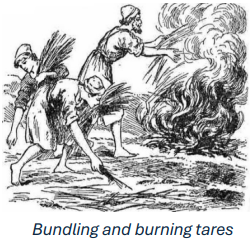 ‘The kingdom of heaven may be compared to a man who sowed good seed in his field. But while his men were sleeping, his enemy came and sowed tares among the wheat, and went away. But when the wheat sprouted and bore grain, then the tares became evident also. The slaves of the landowner came and said to him, ‘Sir, did you not sow good seed in your field? How then does it have tares?’ And he said to them, ‘An enemy has done this!’ The slaves said to him, ‘Do you want us, then, to go and gather them up?’ But he said, ‘No; for while you are gathering up the tares, you may uproot the wheat with them. Allow both to grow together until the harvest; and in the time of the harvest I will say to the reapers, First gather up the tares and bind them in bundles to burn them up; but gather the wheat into my barn.’”
‘The kingdom of heaven may be compared to a man who sowed good seed in his field. But while his men were sleeping, his enemy came and sowed tares among the wheat, and went away. But when the wheat sprouted and bore grain, then the tares became evident also. The slaves of the landowner came and said to him, ‘Sir, did you not sow good seed in your field? How then does it have tares?’ And he said to them, ‘An enemy has done this!’ The slaves said to him, ‘Do you want us, then, to go and gather them up?’ But he said, ‘No; for while you are gathering up the tares, you may uproot the wheat with them. Allow both to grow together until the harvest; and in the time of the harvest I will say to the reapers, First gather up the tares and bind them in bundles to burn them up; but gather the wheat into my barn.’”
Once all of those truly consecrated to God and His calling have been gathered together to form the Church class or “little flock,” the Gospel Age harvest will end and the next age of God’s plan will begin in earnest.
What do we expect will happen in the Millennial (or Messianic) Age?
- Ephesians 1:10 (kjv) “That in the dispensation of the fulness of times he might gather together in one all things in Christ, both which are in heaven, and which are on earth; even in him.”
After the Church has been completed, God’s Kingdom will be setup in all its power and glory. Mankind will be raised from the dead and taught how to live in harmony with God. After a sufficient period for instruction, mankind will be tested. Those who choose to be obedient to God will be granted everlasting life. Those who choose disobedience will be destroyed.
- Acts 3:23 “And it will be that every soul that does not heed that prophet shall be utterly destroyed from among the people.”
Parable of the Sheep and Goats This judgment process is pictured as a sorting of “sheep” and “goats” by Jesus.
- Matthew 25:31–33 “But when the Son of Man comes in his glory, and all the angels with him, then he will sit on his glorious throne. All the nations will be gathered before him; and he will separate them from one another, as the shepherd separates the sheep from the goats; and he will put the sheep on his right, and the goats on the left.”
- Matthew 25:34–40: Jesus describes the king (a symbol of himself) talking to those on the right, the “sheep.” He lists the positive services and acts performed by this class which made them worthy of being separated out onto the right.
- Matthew 25:41–46: Jesus describes the negative actions performed by the “goats” that caused them to be separated out onto the left. Those of mankind who, after being taught God’s ways in perfect conditions, still choose to lapse into selfish or disobedient minds and hearts will be “cut off” or destroyed. Once this judgment has been completed, only those of mankind in full harmony with God and His ways will remain, and mankind will enter into the wonder of the untold ages to come.
- Isaiah 11:9 “They will not hurt or destroy in all My holy mountain, for the earth will be full of the knowledge of the LORD as the waters cover the sea.”
The Bible is the chronicle of God’s plan to bless mankind, as members of the Church class, or as members of the restored and perfected human race. When this is truly understood, the marvelous true character of God’s loving and just spirit are abundantly made evident.
“Then you will say on that day, ‘I will give thanks to You, O Lord; for although You were angry with me,
Your anger is turned away, and You comfort me. Behold, God is my salvation, I will trust and not be afraid;
for the Lord God is my strength and song, and He has become my salvation. Therefore you will joyously draw water from the springs of salvation.’ And in that day, you will say, ‘Give thanks to the Lord, call on His name.
Make known His deeds among the peoples; make them remember that His name is exalted.
Praise the Lord in song, for He has done excellent things; let this be known throughout the earth.
Cry aloud and shout for joy, O inhabitant of Zion, for great in your midst is the Holy One of Israel.’”
Isaiah 12:1–6



